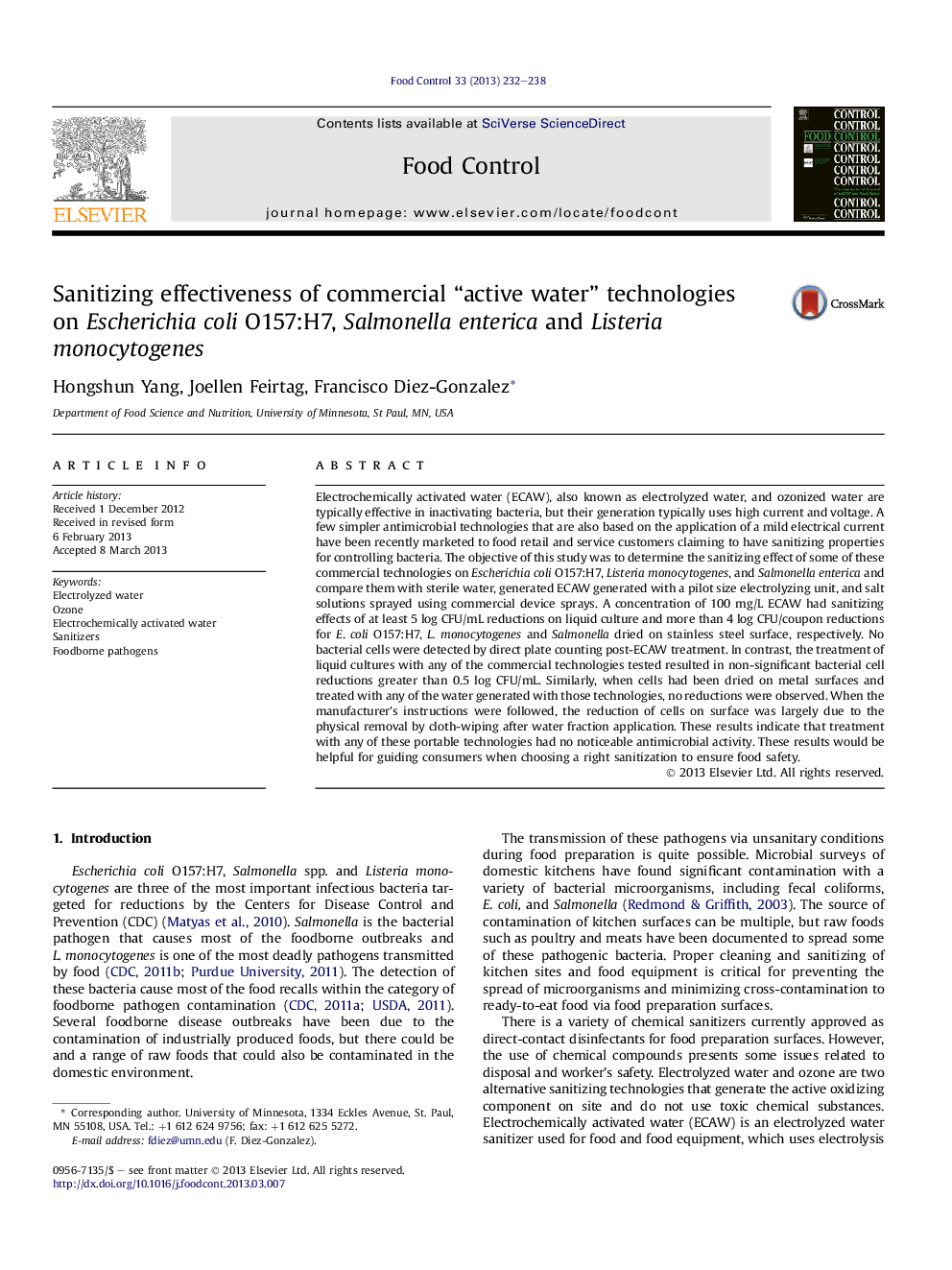| کد مقاله | کد نشریه | سال انتشار | مقاله انگلیسی | نسخه تمام متن |
|---|---|---|---|---|
| 6392517 | 1330440 | 2013 | 7 صفحه PDF | دانلود رایگان |
عنوان انگلیسی مقاله ISI
Sanitizing effectiveness of commercial “active water” technologies on Escherichia coli O157:H7, Salmonella enterica and Listeria monocytogenes
دانلود مقاله + سفارش ترجمه
دانلود مقاله ISI انگلیسی
رایگان برای ایرانیان
کلمات کلیدی
موضوعات مرتبط
علوم زیستی و بیوفناوری
علوم کشاورزی و بیولوژیک
دانش تغذیه
پیش نمایش صفحه اول مقاله

چکیده انگلیسی
Electrochemically activated water (ECAW), also known as electrolyzed water, and ozonized water are typically effective in inactivating bacteria, but their generation typically uses high current and voltage. A few simpler antimicrobial technologies that are also based on the application of a mild electrical current have been recently marketed to food retail and service customers claiming to have sanitizing properties for controlling bacteria. The objective of this study was to determine the sanitizing effect of some of these commercial technologies on Escherichia coli O157:H7, Listeria monocytogenes, and Salmonella enterica and compare them with sterile water, generated ECAW generated with a pilot size electrolyzing unit, and salt solutions sprayed using commercial device sprays. A concentration of 100 mg/L ECAW had sanitizing effects of at least 5 log CFU/mL reductions on liquid culture and more than 4 log CFU/coupon reductions for E. coli O157:H7, L. monocytogenes and Salmonella dried on stainless steel surface, respectively. No bacterial cells were detected by direct plate counting post-ECAW treatment. In contrast, the treatment of liquid cultures with any of the commercial technologies tested resulted in non-significant bacterial cell reductions greater than 0.5 log CFU/mL. Similarly, when cells had been dried on metal surfaces and treated with any of the water generated with those technologies, no reductions were observed. When the manufacturer's instructions were followed, the reduction of cells on surface was largely due to the physical removal by cloth-wiping after water fraction application. These results indicate that treatment with any of these portable technologies had no noticeable antimicrobial activity. These results would be helpful for guiding consumers when choosing a right sanitization to ensure food safety.
ناشر
Database: Elsevier - ScienceDirect (ساینس دایرکت)
Journal: Food Control - Volume 33, Issue 1, September 2013, Pages 232-238
Journal: Food Control - Volume 33, Issue 1, September 2013, Pages 232-238
نویسندگان
Hongshun Yang, Joellen Feirtag, Francisco Diez-Gonzalez,